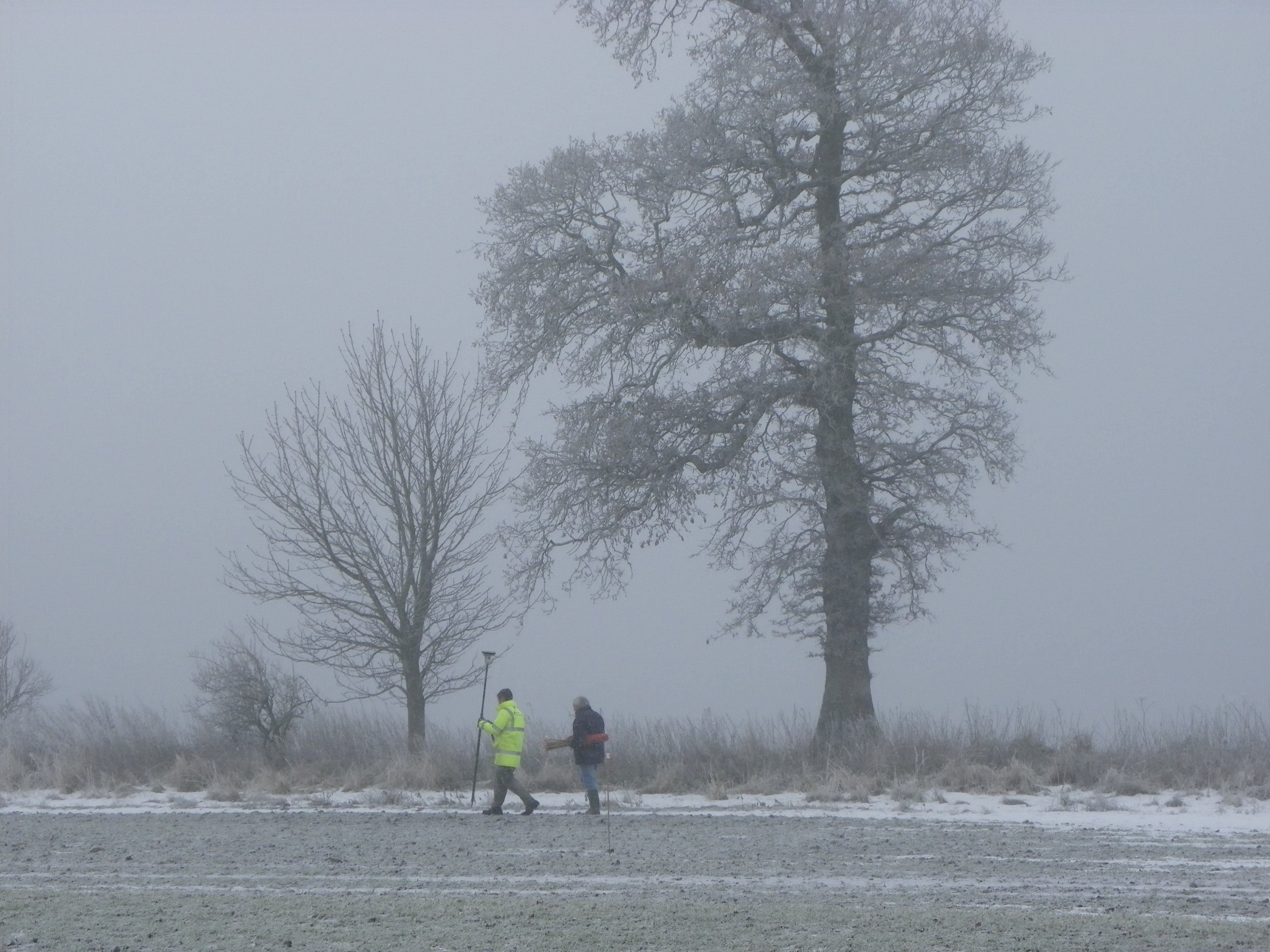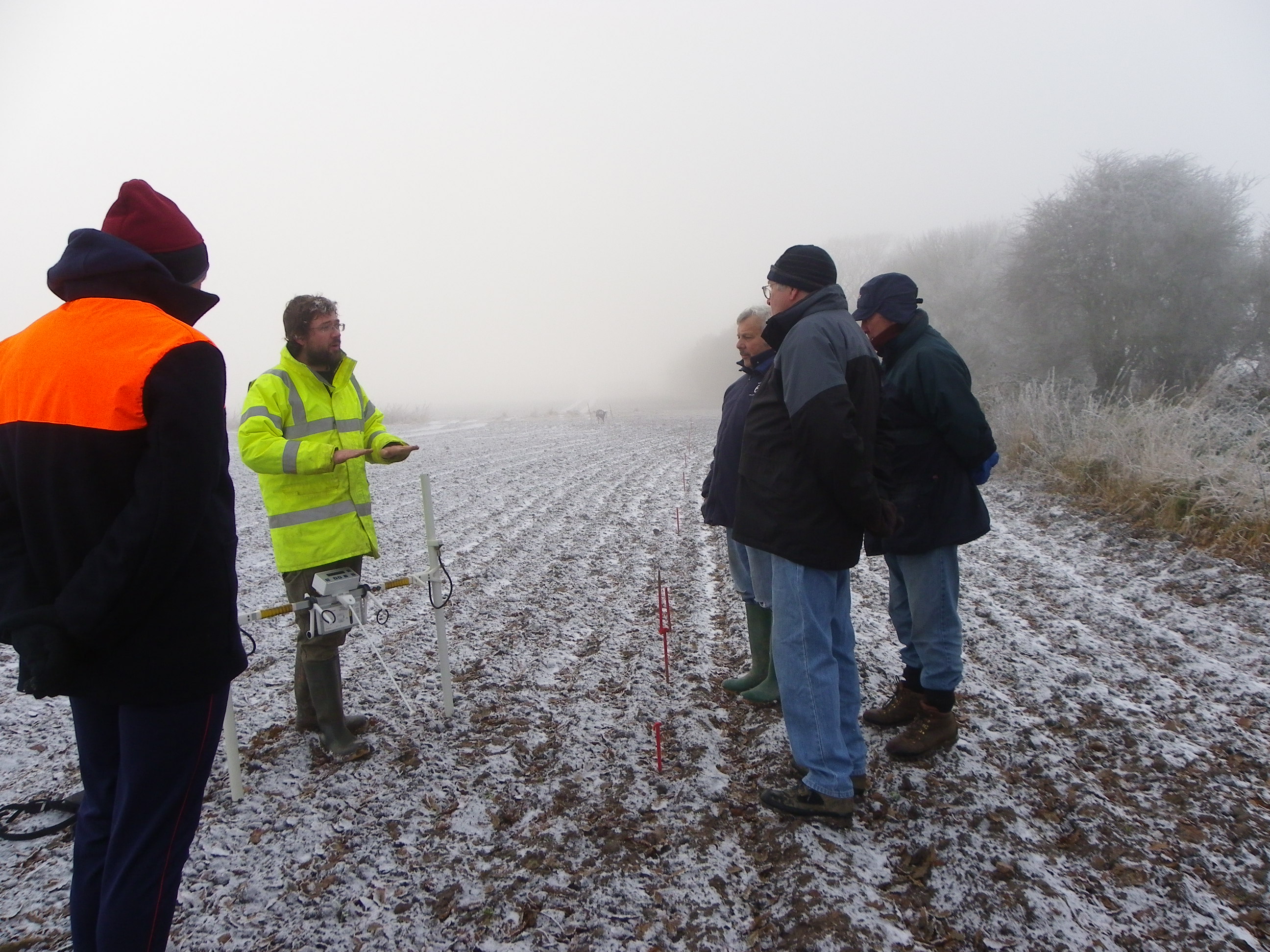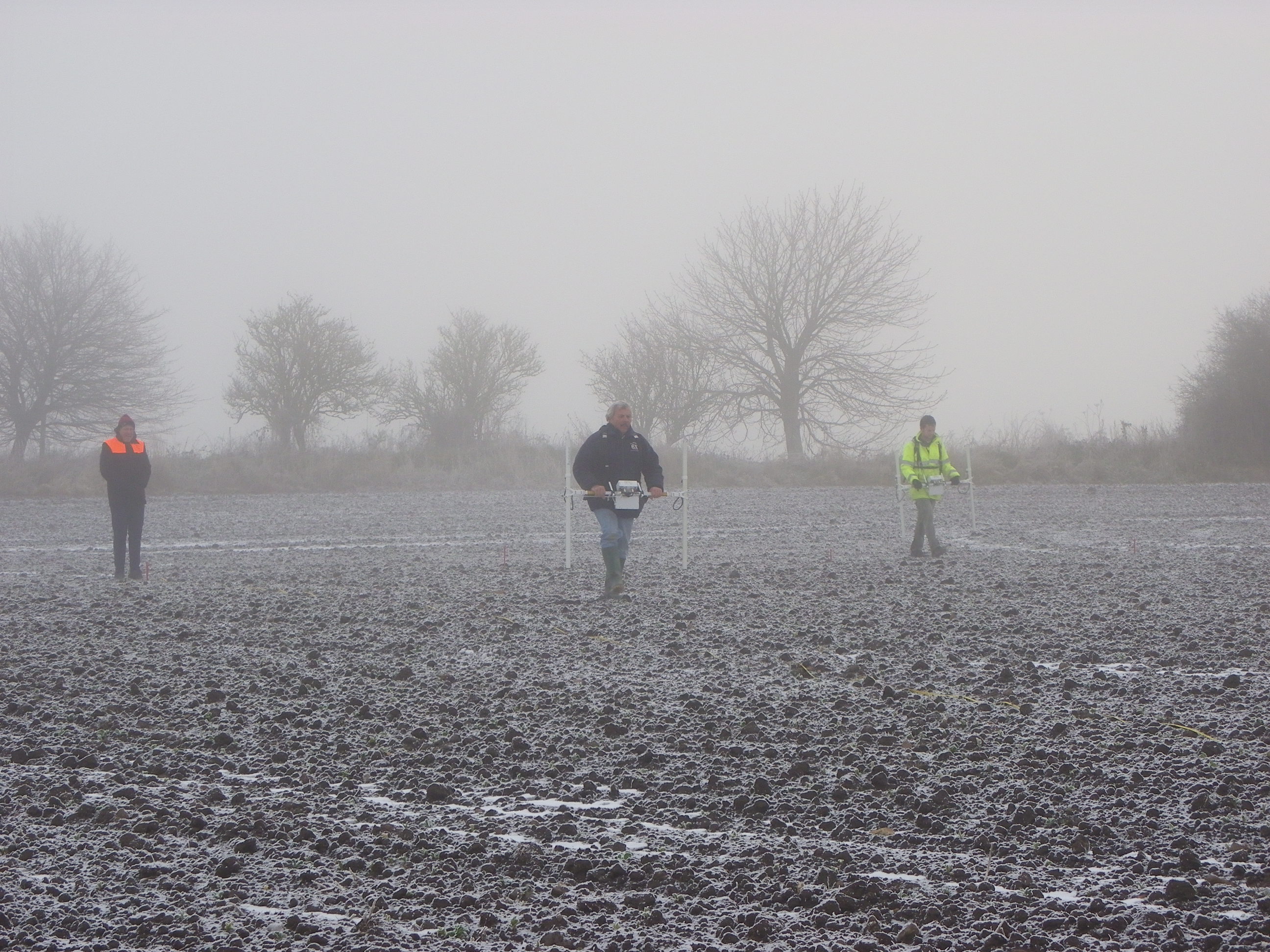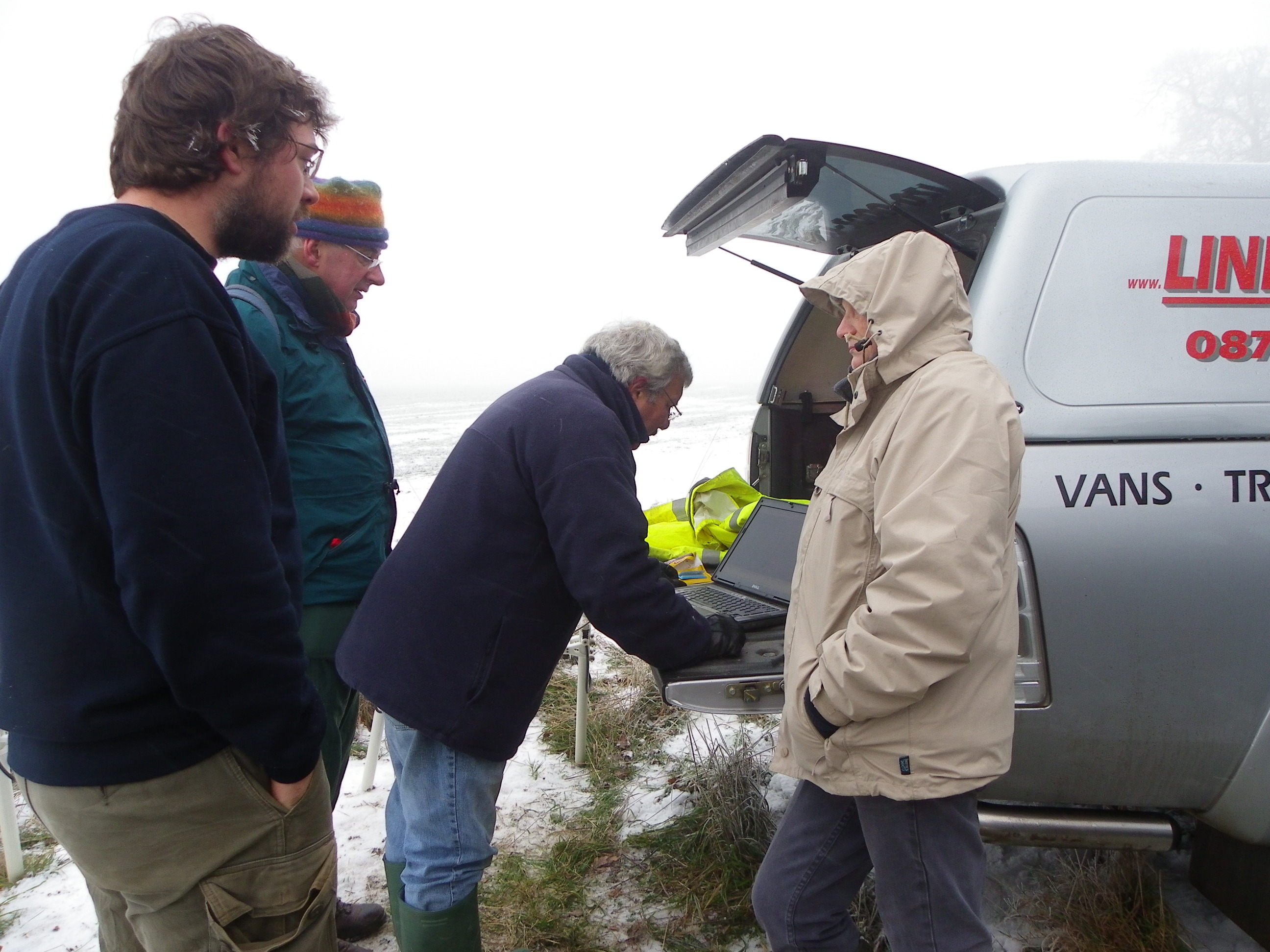Getting out to the site of the Chiseldon Cauldrons to start our geophysical survey was a bit disorienting. The entire field was covered in a blanket of thick fog, and once we were driving along the path through the field the hedges that marked the edges of the field were out of view. When we reached the site and got out of the cars the ground was frozen, slippery and covered in patches of snow. Those of us who had been out to the site for the field walking were grateful that the wind that was blowing that day wasn’t blowing now… It was cold enough in the field. There was work to be done, however, so we disappeared into the fog to set up a grid. With that done, one of the volunteers and I retreated to the vehicles and our flasks of soup and tea. A geophysics team of two from Wessex Archaeology started working on the survey. By lunch time they were finished work on the north side of the field boundary that’s near the cauldrons site. The results for the first half of the day were uploaded onto a laptop.

After lunch a group of volunteers joined us to take a look at the survey process and the equipment. After learning how everything worked they had the chance to try doing the geophysics themselves. Before anyone could have a go, however, they had to make sure they were metal-free. The results produced by the equipment we were using (fluxgate gradiometers) can be distorted by any metal objects near their sensors. It’s a challenge to find clothing - and particularly warm clothing – without any metal on it. Take a moment to think about your own wardrobe – how many articles of clothing do you have without any metal on them? (Even small items like zip-pulls count.) Unfortunately some of our volunteers had metal pieces on their boots and their coats. Far from being disappointed at not having the opportunity to try out the equipment, they just seemed thankful for their warm winter clothes.

Throughout the afternoon volunteers arrived on site to have a look at the survey in process, and left the site in search of somewhere warmer. A few hardy people stayed to see the results at the end of the day.

Once the work on the south side of the boundary was finished the second half of the results could be uploaded onto the computer and put together with the results from the morning. No Iron Age enclosures popped out at us once the results were one the screen… but that doesn’t mean that the results weren’t interesting. We’ve found out some new information about that field boundary, and we have maybe found some other interesting features as well. However, it’s hard to interpret a black and white picture when your laptop is on the back of a truck and there’s snow falling all over the screen. Now that we’re back in the office the results will get a good looking over. I’ll be able to tell you more about what we have learned once that has happened.

If you would like to know the results of our geophysical survey please keep checking this blog. The results will be posted here.